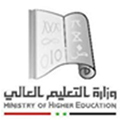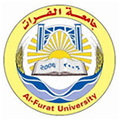آخر الأخبار
دراسة بعض طرق إدارة مياه الصرف الزراعي وأثرها في ملوحة التربة وإنتاجية محصول القمح
2014, Volume 9, issue 34,pp 157-166| Cite as
Study of Some Management Practices Drainage Water Irrigation And Effect Them On Soil Salinity And Productivity of wheat crop
| authors |
Maged Fayad Amrer |
| Abstract |
The experiment has been done with individual intersected effects of using water of different salty levels with the help of some new ways of irrigation on some properties of superficial layer of soil in conditions of The 7th of April in deir-ezzor and the productivity of wheat crop. By using agricultural drainage water 100 %, fresh waster 100 % and 50 % drainage + 50 % fresh water (mixed). Following the superficial irrigation system ( basins ) and sprinkling and dripping irrigation systems using split plot design. With three repetitive courses the result of the experiment showed the following: 1. An increase in the PH of soil in irrigating by dripping then followed by sprinkling comparing it with superficial irrigation when using agricultural drainage water compared with fresh and mixed water. 2. An increase in the Na and Cl of soil when using agricultural drainage water compared with fresh and mixed water in irrigating by dripping then followed by sprinkling comparing it with superficial irrigation. 3. An increase in the SAR of soil in irrigating by dripping then followed by sprinkling comparing it with superficial irrigation when using agricultural drainage water compared with fresh and mixed water. 4. there was a transcendence in the values ability of using water for wheat crop in the treatments of dripping system irrigation compared to other ways of irrigation and its reduction when using agricultural drainage water compared with other kinds of water. The statistical analysis L.S.D proved that their were significant differences among irrigation systems and the used water. |
| الكاتب |
ماجد فياض أمرير |
| الملخص |
جرى تنفيذ تجربة حقلية بهدف تقييم أثر مياه الصرف الزراعي وطرق إضافتها على تراكم الأملاح وإنتاجية محصول القمح في أراضي مزرعة السابع من نيسان في محافظة دير الزور. وقد شملت الدراسة استعمال مياه الصرف الزراعي بنسبة 100% ومياه نهر الفرات بنسبة 100% ومياه مختلطة (50% مياه صرف زراعي + % 50 مياه نهر الفرات) وفق ثلاثة طرق : الري السطحي و الري بالرش و الري بالتنقيط. وفق تصميم القطاعات المنشقة وبثلاثة مكررات ودلت النتائج على : - سبب استخدام مياه الصرف الزراعي والمياه المختلطة لزيادة في قيمة PH التربة وكانت الزيادة واضحة في الطبقة السطحية عند استعمال نظام الري بالتنقيط مقارنة مع نظامي الري بالرش و السطحي.
- إن استخدام مياه الصرف الزراعي أدت لزيادة تركيز كلا من الكلور والصوديوم في الطبقة السطحية للتربة عند الري بالتنقيط مقارنة بالري بالرش والري السطحي يليها استخدام المياه المختلطة مقارنة مع المياه العذبة.
- أدى الري بالتنقيط باستعمال مياه الصرف الزراعي لزيادة تراكم الأملاح في الطبقة السطحية للتربة تليها استخدام المياه المختلطة مقارنة مع المياه العذبة.
زيادة إنتاجية محصول القمح طن /هكتار باستخدام نظام الري بالتنقيط يليه نظام الري بالرش مقارنة مع نظام الري السسطحي وانخفاضها بزيادة ملوحة مياه الري . - والتحليل الإحصائي LSD يؤكد وجود فروق معنوية بين المعاملات المدروسة. |














